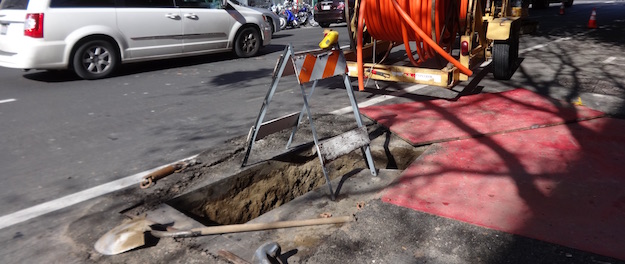
Another try at getting Caltrans to think about broadband when it designs highways is underway in Sacramento. Assemblyman Jim Wood (D – Healdsburg) introduced assembly bill 980 last week, which would require Caltrans to “install a broadband conduit capable of supporting fiber optic communication cables” in a limited set of highway construction projects.
The limited set consists of priority areas as determined by the California Public Utilities Commission. In 2014, the CPUC endorsed a priority list of 182 communities in 47 counties that regional broadband consortia had identified as lacking adequate broadband service. Since then, a handful of subsidies from the California Advanced Services Fund (CASF) have been approved for infrastructure construction projects in or near a small number of those communities – Petrolia, in Humboldt County, is one – and the list has also figured in other efforts to close California’s digital divide, for example in the Salinas Valley, in Monterey County, where Charter Communications was required to upgrade its analog digital plant in order to gain CPUC approval to buy Time Warner’s cable systems.
The CPUC is evaluating the way it sets priorities for CASF grants, so that list of 182 communities could be edited or even scrapped altogether. As currently drafted, AB 980 allows for changes of that sort.
The real question is whether Caltrans will be able to block AB 980. Broader dig once and shadow conduit requirements were originally included in a bill that received wide support in the legislature last year. Unfortunately, intransigence from Caltrans led to a veto threat from governor Jerry Brown and it was pretty thoroughly watered down. There’s no reason to think that Caltrans will be any more cooperative just because the shadow conduit requirements in AB 980 involve fewer projects, but Brown and his advisors might be more receptive to a bill that’s smaller in scope and targets communities that have a documented broadband infrastructure gap.
